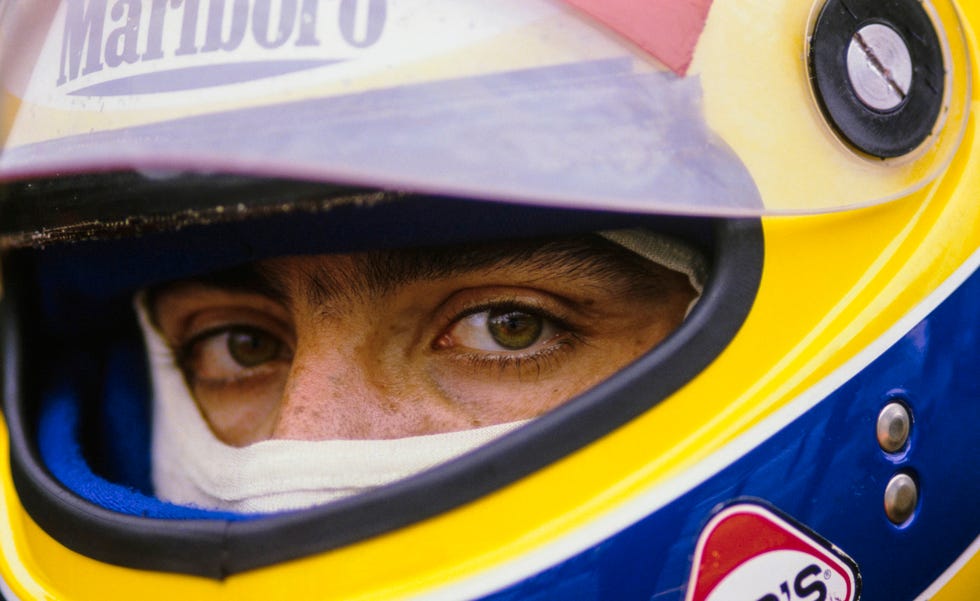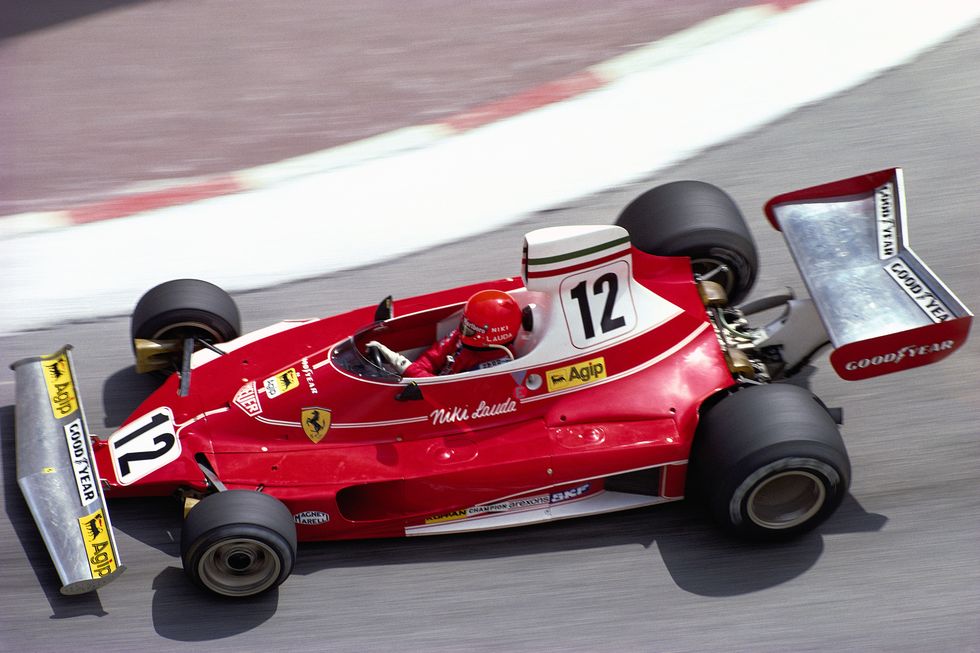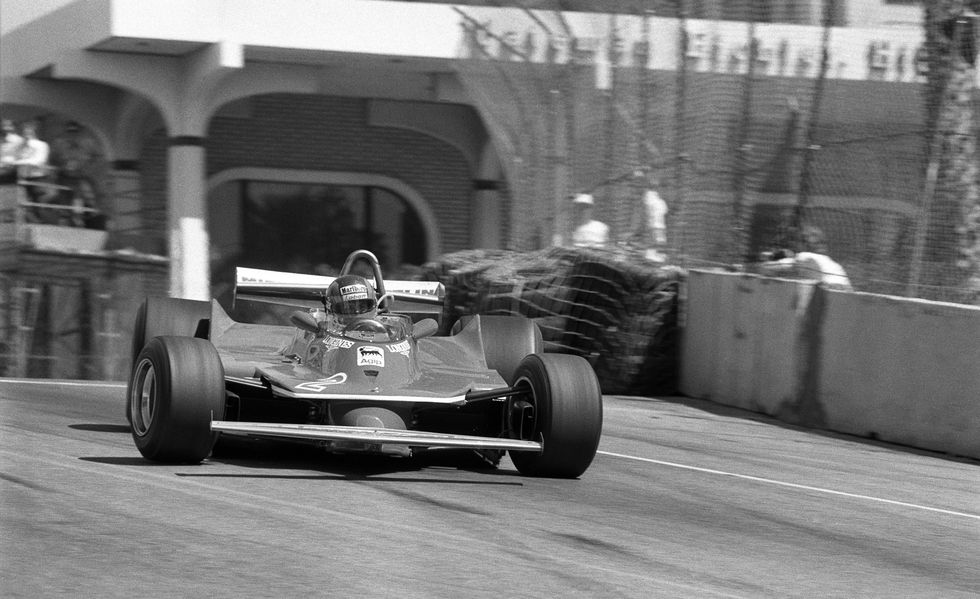Automotive journalist James Allen was an on-air Formula 1 commentator for ESPN and ITV in the 1990s and 2000s and wrote biographies of famed drivers including Michael Schumacher and Nigel Mansell. But his reportage on racing goes back much further than that. His father, Bill, was a factory endurance driver for Lotus, and Allen grew up watching races in the late 1960s and early 1970s. He found ways to relate the details of what he’d seen, even back then. “I did it just in the way that kids do at that age,” he tells Car and Driver. “Doing drawings and stuff like that.”
His new book, Ferrari from Inside and Outside (ACC Art Books, $75) covers an intensive period in the brand’s racing history, from the 1960s to the 2010s, when race cars bearing the prancing horse were among the most formidable (and occasionally the most disappointing) competitors on the field.
Two Photographers and Their Separate Approaches
Despite the depth of the written and spoken knowledge he has shared previously on the subject in his on-air and magazine work, Allen has chosen to showcase a different means of covering the topic. While the book includes sections in Allen’s fluid prose, it focuses mainly on a pair of photographers—Rainer Schlegelmilch and Ercole Colombo—who made their names shooting F1 teams, races, and racers.
The book’s title derives from these two shooters and their key differences. “I’ve always loved the kind of reportage style of photography,” Allen says. “Rainer started out doing that, and there’s real echoes in his work of people like Cartier-Bresson, or Capa, or the great Magnum photographers.” Schlegelmilch began shooting racing from this perspective, focusing on the drivers, “particularly the look of fear on the drivers’ faces before the start of the race,” Allen says. “This was the 1960s, possibly the most dangerous time in Grand Prix racing.”
But as his career evolved in the sport, he developed a new technique. “He got this idea of using zoom lenses,” Allen says. “And he practiced his technique where he would move the zoom and to create this explosion of speed and color—he calls it painting with the colors of a racing car.” The technique has become standard in the field, but Schlegelmilch was an innovator.
The other photographer that the book focuses on, Columbo, was far less distant from the sport and the brand. “Enzo Ferrari hired him almost as like an official photographer, although it was never written down in a contract,” Allen says. “He was always called in to see behind the scenes stuff and he got a lot of intimate stuff with the maker of one of the greatest myths in the automotive world.”
Allen saw an interesting tension in these two exemplary artists’ way of shooting. “The difference between the lived experience on the inside of the brand, and the perceptions on the outside.” When looking at Rainer, he saw “the ultimate outsider looking in” and with Colombo, “the ultimate insider shooting out.” From this, he derived the concept for his book, narratively and visually.
The photographs in the book, reproduced with startling clarity while still maintaining a period-correct palette, are a joy to study, demonstrating with profound evidence the progression of the drivers, cars, and competition—as well as the photographers’ techniques—through the decades. The individual pictures, selected and honed in conversation with the two photographers, both still alive, all came from the Motorsport Images Archive, which Allen describes as the largest in racing (with over 26 million images) and the only one to maintain an unbroken visual history of Formula 1, from the first Grand Prix in 1952, until the present day.
The Enduring Influence of F1
Though Allen is focused on the past here, he has been working in the sport long enough to recognize F1’s key importance in shifting consumer perceptions and in advancing new technologies in the broader automotive realm. In fact, he noted quite clearly that important innovations and adaptations found in road cars often derived from F1 technology. He feels this is particularly relevant given the shift to alternative fuels, hybridization, and zero tailpipe emissions practices that the sport is implementing in the coming years.
“Formula 1 was built during the time that’s chronicled in this book, to become a global phenomenon. Now hundreds of millions of people follow the Grand Prix,” he says. “So I think that the technologies Formula 1 is working on—which it will then showcase from 2026 onwards using this amazing global platform that’s been built—I think that will play a major part in helping the world decarbonize, way beyond just Formula 1 itself.”
Contributing Editor
Brett Berk (he/him) is a former preschool teacher and early childhood center director who spent a decade as a youth and family researcher and now covers the topics of kids and the auto industry for publications including CNN, the New York Times, Popular Mechanics and more. He has published a parenting book, The Gay Uncle’s Guide to Parenting, and since 2008 has driven and reviewed thousands of cars for Car and Driver and Road & Track, where he is contributing editor. He has also written for Architectural Digest, Billboard, ELLE Decor, Esquire, GQ, Travel + Leisure and Vanity Fair.



